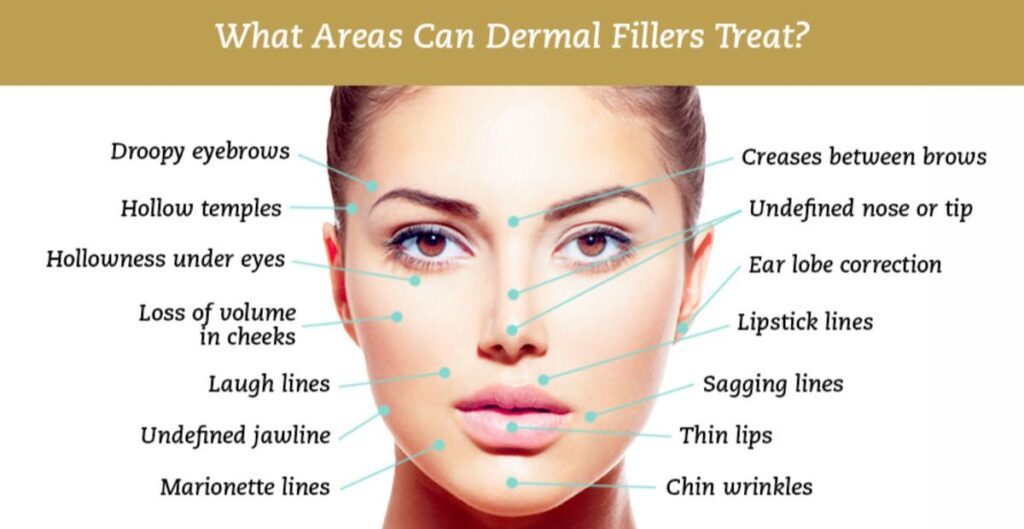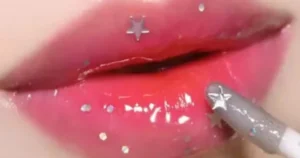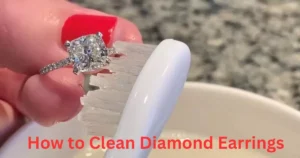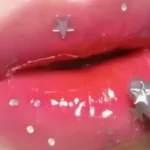Having a torn earlobe can be a painful and unsightly experience. It is crucial to take immediate action to stop the bleeding, clean the wound, and promote healing. This comprehensive guide will walk you through the steps to treat a torn earlobe at home and provide valuable insights into professional earlobe repair options.
What to Do if Your Earlobe Tears
If your earlobe tears, remain calm and follow these steps:
- Apply Pressure: Immediately apply firm pressure to the torn area using a clean cloth or sterile gauze. This will help stop the bleeding.
- Clean the Wound: Once the bleeding has stopped, gently clean the area with mild soap and warm water. Avoid using hydrogen peroxide or alcohol, as they can damage the delicate earlobe tissue.
- Apply Antibiotic Ointment: After cleaning the wound, apply a thin layer of antibiotic ointment to prevent infection.
- Bandage the Area: Loosely cover the torn earlobe with a sterile bandage or adhesive strip. This will protect the wound and allow it to heal properly.
- Take Over-the-Counter Pain Medication: If you experience discomfort or pain, consider taking an over-the-counter pain reliever like acetaminophen or ibuprofen.
- Watch for Signs of Infection: Monitor the wound for signs of infection, such as increased redness, swelling, warmth, or pus. If these symptoms occur, seek medical attention immediately.
Remember, it’s essential to seek professional medical advice if the tear is severe, if you have trouble stopping the bleeding, or if you have any concerns about proper healing.
How to Treat Tears and Holes Caused by Earlobe Stretching
Earlobe stretching, also known as gauging, is a popular body modification practice. However, it can lead to tears or holes in the earlobe if not done properly or if the jewelry is accidentally pulled out. Here’s how to treat these types of injuries:
- Remove the Jewelry: Gently remove any jewelry from the affected earlobe to prevent further tearing or damage.
- Apply Pressure: Use a clean cloth or sterile gauze to apply firm pressure to the wound and stop the bleeding.
- Clean the Area: Once the bleeding has stopped, clean the wound with mild soap and warm water.
- Apply Antibiotic Ointment: Apply a thin layer of antibiotic ointment to prevent infection.
- Allow the Wound to Heal: Avoid re-inserting jewelry or stretching the earlobe until the wound has fully healed, which can take several weeks.
If the tear or hole is severe, or if you have concerns about proper healing, it’s best to seek professional medical attention.
How Do We Surgically Repair Torn, Stretched, or Sagging Earlobes?
In some cases, a torn, stretched, or sagging earlobe may require surgical repair. This procedure, known as an earlobe repair or earlobe reconstruction, can restore the natural appearance of the earlobe and allow for future earring wearing. Here’s a general overview of the surgical process:
- Anesthesia: The procedure is typically performed under local anesthesia, ensuring your comfort throughout the process.
- Incision: The surgeon will make a precise incision along the torn or stretched area of the earlobe.
- Tissue Removal: Any excess or damaged tissue will be carefully removed to create a clean, even surface.
- Reshaping: The earlobe will be reshaped and sculpted to achieve a natural, aesthetically pleasing appearance.
- Suturing: The incision will be closed with dissolvable sutures, allowing the earlobe to heal properly.
- Aftercare: Following the procedure, you will receive detailed instructions on how to care for the repaired earlobe during the healing process.
It’s important to note that the recovery time may vary, but most patients can resume normal activities within a week or two.
Can I Use Dermal Fillers to Repair My Earlobes?

In some cases, dermal fillers can be used as a non-surgical option to repair torn, stretched, or sagging earlobes. This minimally invasive procedure involves injecting a soft, gel-like substance (such as hyaluronic acid) into the earlobe to restore volume and shape.
Dermal fillers can be an effective solution for minor earlobe imperfections or for those who prefer a non-surgical approach. However, it’s important to note that the results are temporary, and the procedure may need to be repeated periodically to maintain the desired appearance.
Can Earlobe Repair be Combined with Other Facial Procedures?
Absolutely! Earlobe repair can be combined with other facial procedures, such as a facelift, neck lift, or eyelid surgery, for a comprehensive rejuvenation and enhancement of your appearance.
Combining procedures can be advantageous, as it allows for a single recovery period and can potentially result in a more harmonious and natural-looking outcome. However, it’s essential to discuss your goals and concerns with a qualified and experienced plastic surgeon to determine the best course of action.
Arrange an Earlobe Repair Consultation in Jackson, Mississippi with Faces PLLC
If you’re considering earlobe repair or have concerns about a torn or stretched earlobe, it’s crucial to consult with a qualified and experienced plastic surgeon. At Faces PLLC in Jackson, Mississippi, our team of board-certified plastic surgeons specializes in earlobe repair and other facial procedures.
During your consultation, our surgeons will evaluate your unique situation, discuss your goals and expectations, and develop a personalized treatment plan tailored to your needs. We prioritize patient safety, comfort, and natural-looking results.
To schedule your earlobe repair consultation, please contact Faces PLLC today.
How do you treat a cut on your earlobe?
Treating a cut on your earlobe requires prompt action to prevent further injury and promote proper healing. Here are the steps to follow:
- Stop the Bleeding: Apply firm pressure to the cut using a clean cloth or sterile gauze. This will help stop the bleeding and allow you to properly clean the wound.
- Clean the Wound: Once the bleeding has stopped, gently clean the cut with mild soap and warm water. Avoid using harsh chemicals or alcohol-based products, as they can further irritate the delicate earlobe tissue.
- Apply Antibiotic Ointment: After cleaning the wound, apply a thin layer of antibiotic ointment to help prevent infection and promote healing.
- Bandage the Area: Cover the cut with a sterile bandage or adhesive strip to protect it from further irritation or contamination.
- Watch for Signs of Infection: Monitor the wound for signs of infection, such as increased redness, swelling, warmth, or pus. If these symptoms occur, seek medical attention immediately.
- Avoid Re-injuring the Area: Refrain from wearing earrings or handling the earlobe until it has fully healed, which can take several days to a week.
If the cut is deep, if you have trouble stopping the bleeding, or if you have any concerns about proper healing, it’s best to seek professional medical attention.
Do earring tears heal?
Yes, most earring tears can heal if proper care is taken. However, the healing process and the resulting appearance of the earlobe may vary depending on the severity of the tear and the care provided.
Minor tears or nicks in the earlobe may heal on their own with proper cleaning, antibiotic ointment application, and protection from further irritation. In these cases, the earlobe may heal with minimal scarring or deformity.
More severe tears or those that completely separate the earlobe may require medical attention or surgical repair to ensure proper healing and restoration of the earlobe’s appearance. Without proper treatment, these types of tears may heal irregularly, resulting in a deformed or disfigured earlobe.
It’s essential to follow proper wound care instructions and seek medical advice if you have concerns about the healing process or if the tear is severe. Additionally, it’s recommended to avoid wearing earrings or handling the affected earlobe until it has fully healed to prevent further injury or complications.
How do you take care of earlobe repair?
Proper care after an earlobe repair procedure is crucial for ensuring a successful recovery and optimal results. Here are some tips for caring for your earlobe repair:
- Follow Your Surgeon’s Instructions: Your plastic surgeon will provide you with specific aftercare instructions tailored to your individual case. Follow these instructions carefully to ensure proper healing and minimize the risk of complications.
- Keep the Area Clean: Gently clean the repaired earlobe with a mild soap and warm water
Can I put Vaseline on my ear lobe?
While Vaseline (petroleum jelly) can be beneficial for certain skin conditions, it’s generally not recommended for use on a torn or injured earlobe. Here’s why:
- Wound Healing: Vaseline creates an occlusive barrier that can trap moisture and bacteria, potentially hindering the healing process and increasing the risk of infection.
- Antibiotic Ointment Interference: If you need to apply an antibiotic ointment to the torn earlobe, Vaseline may prevent the medication from properly penetrating the wound and being effective.
- Adhesive Interference: If you need to cover the wound with a bandage or adhesive strip, Vaseline can interfere with the adhesive’s ability to stick properly, compromising the protection of the wound.
Instead of Vaseline, it’s better to keep the torn earlobe clean and dry, and apply an antibiotic ointment as directed by your healthcare provider. Once the wound has started to heal, you can use a gentle, fragrance-free moisturizer to keep the surrounding skin hydrated.
If you have any concerns or questions about caring for a torn earlobe, it’s always best to consult with a healthcare professional for personalized advice.
How can I fix my earlobe without surgery?

While surgery is often the most effective and long-lasting solution for repairing a torn, stretched, or sagging earlobe, there are some non-surgical options that may be suitable in certain cases:
- Earlobe Fillers: Dermal fillers, such as hyaluronic acid, can be injected into the earlobe to add volume and reshape it temporarily. This option is best for minor imperfections or mild sagging.
- Earlobe Clips or Supports: Special clips or supports designed to hold the earlobe in place can help conceal or minimize the appearance of a torn or stretched earlobe. However, these are temporary solutions and may not be suitable for more severe cases.
- Earlobe Taping: Using specialized tapes or adhesives, the earlobe can be carefully reshaped and held in place during the healing process. This method may be effective for minor tears or stretching.
- Earlobe Creams or Gels: Some over-the-counter creams or gels claim to help improve the appearance of sagging or stretched earlobes by promoting collagen production and skin tightening. However, their effectiveness is often limited, and results may vary.
It’s important to note that these non-surgical options are typically temporary or less effective than surgical repair, especially for more severe cases. Additionally, some of these methods may carry risks or complications if not performed properly.
If you’re considering a non-surgical earlobe repair, it’s best to consult with a qualified healthcare professional who can evaluate your specific situation and provide personalized recommendations.
Conclusion
Whether you’ve suffered a minor tear from an earring or more extensive stretching and damage, taking proper care of your torn earlobe is crucial. By following the steps outlined in this guide, such as stopping any bleeding, cleaning the wound, applying antibiotic ointment, and protecting the area during healing, you can ensure the best possible outcome.
However, for more severe cases or if you desire a permanent solution, consulting with a qualified plastic surgeon may be necessary. Procedures like surgical earlobe repair or dermal filler injections can effectively reshape and restore the natural appearance of your earlobes. With the right treatment approach tailored to your specific needs, you can regain confidence in your look and enjoy wearing earrings once again.

As a seasoned fashion enthusiast with over 6 years of hands-on experience, I’m dedicated to sharing my expertise and passion for all things hair and earrings.











